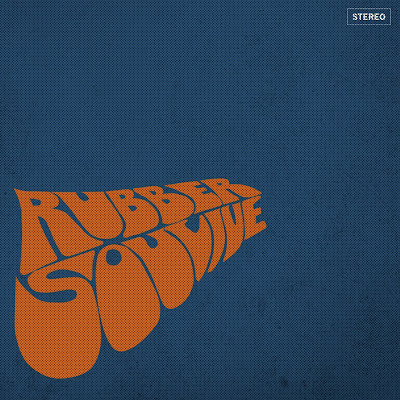Words By Zach Zeidner
Have you ever wondered what The Beatles would sound like if they were reimagined as a dynamic jazz trio? Soulive answers this question with their album “Rubber Soulive,” a vibrant jazz-funk tribute to the legendary Fab Four. This album dives deep into The Beatles’ extensive six-year repertoire, selecting tracks that showcase both the genius of their songwriting and the exceptional lyrical jazz guitar style of Eric Krasno.
The album kicks off with “Drive My Car” from The Beatles’ “Rubber Soul.” This opening track choice is immediately engaging, setting the stage for Soulive’s signature “cool” vibe. Neal Evans (keys) lays down a compelling rhythmic foundation, allowing Krasno to interpret the song’s essence through his guitar. As Krasno navigates the familiar melodic phrases, he skillfully transitions into improvisational sections, exploring the harmonic landscape of “Drive My Car” with tasteful and lyrical guitar lines. This fresh perspective immediately captivates, inviting the listener to eagerly anticipate the next track.
Next up is “Taxman,” the opening track from “Revolver.” Alan Evans (drums) dials back the tempo, establishing a heavy, driving drum groove that emphasizes the downbeats, creating a rich and danceable rhythm. This rhythmic foundation provides a perfect canvas for Krasno’s guitar to truly shine. He elevates “Taxman” to new heights, masterfully exploring his technique within the song’s chord structure. Neal Evans also contributes a funky and soulful organ solo, adding another layer of depth to Soulive’s interpretation of this otherwise serious song.
“In My Life,” another gem from “Rubber Soul,” follows. This track serves as an ideal showcase for Krasno’s lyrical guitar playing. With Alan Evans providing subtle nods to Ringo Starr’s iconic drum part and Neal Evans adding atmospheric textures, Krasno’s guitar becomes the voice of the song. His playing is so expressive that the lyrics seem to resonate in your mind as he delivers a heartfelt homage to this beloved Lennon composition.
“Eleanor Rigby,” a beautifully enigmatic track from “Revolver,” is next on the setlist. Soulive successfully captures the song’s mysterious essence with a deliberately slow tempo at the beginning. As the song progresses, the tempo gradually increases, driven by Alan Evans’ compelling beat. Krasno skillfully navigates the jazz harmonies and lyrical melody, building the improvisation in a way that mirrors the original song’s dynamic arc. Soulive’s rendition maintains the unsettling mystery that made this Paul McCartney composition so intriguing and celebrated.
“I Want You (She’s So Heavy)” from “Abbey Road” makes an appearance. The original track is primarily instrumental, and Soulive stays relatively faithful to the arrangement, including the rare vocal harmonies on the album. While staying true to the original structure, Soulive injects a jazzier feel, mainly through Neal Evans’ organ work and Eric Krasno’s extended, improvisational guitar solos.
“Come Together,” the opening track from “Abbey Road,” bursts forth with infectious funk. Alan Evans lays down Ringo’s signature drum groove, providing a solid foundation for the organ and Krasno’s guitar to interpret the lyrics instrumentally. The organ breakdowns are tastefully executed, elevating the song’s energy. Krasno’s improvisations over the chord changes are nothing short of mind-blowing, showcasing his jazz sensibilities within this iconic composition. This track stands out as a highlight, culminating in a final organ solo that leaves the listener wanting more.
“Something,” also from “Abbey Road,” provides another perfect vehicle for Krasno’s lyrical guitar voice. As he beautifully articulates the song’s melody, Alan Evans adds subtle jazzy embellishments to Ringo’s original drum part. The organ provides a sweet harmonic backdrop, allowing Krasno to fully unveil the inherent beauty of the composition. This rendition underscores the timeless quality of The Beatles’ songwriting, proving its ability to resonate just as powerfully in an instrumental format.
“Revolution 1” receives a funky makeover, drawing from the slower version of the original single “Revolution” from “The White Album.” The laid-back, fluid rhythm lends itself perfectly to a funky interpretation, transforming the song into a danceable groove. As the band explores the jazz possibilities within the chord progression, it becomes clear that this track is particularly well-suited for a jazz treatment. Soulive’s take is both innovative and thoroughly enjoyable.
“Help!” the title track from the album “HELP!”, marks Soulive’s exploration of The Beatles’ earlier catalog. This jazzy rendition of “Help!” is tasteful and energetic, with Krasno’s stylish guitar lines driving the song forward. Alan Evans adds a lively bounce to his drumming, while Neal Evans’ organ solo injects a soulful dimension, building the jam before handing it back to Krasno to bring it home.
“Day Tripper,” another early Beatles hit single and fan favorite, is given the Soulive treatment. Krasno handles the bass line on his guitar while Alan Evans establishes the groove, highlighting Krasno’s rhythmic role and allowing Neal Evans to shine. The organ takes center stage, delivering the lyrical content in a soulful manner, slowing down the tempo and adding a funky twist to this Beatles classic – a truly tasteful reimagining.
The album concludes with “While My Guitar Gently Weeps,” originally from “The White Album.” This rendition features a slower tempo, with Alan Evans providing tasteful fills around Ringo’s drum pattern. Neal Evans and Krasno engage in captivating solo exchanges, each solo effectively conveying the song’s lyrical essence. The interplay between improvisation and melodic sections, used as a call-and-response, leaves a lasting impression of Soulive’s unique style as the album draws to a close.
Overall, “Rubber Soulive” is a thoroughly enjoyable album. For fans of both The Beatles and jazz, this album hits the sweet spot. However, its true brilliance lies in how it illuminates the compositional genius of The Beatles. These songs, foundational to popular music, reveal their depth and enduring quality when viewed through a jazz-funk lens. Soulive masterfully reinterprets these pieces, shifting them from experimental rock into loosely structured jazz-funk jams. This transformation is remarkable, allowing listeners to appreciate the core brilliance of these compositions, created during a time when music was less technically elaborate than today. “Rubber Soulive” is an impressive achievement that is sure to resonate with listeners.
“Rubber Soulive” was released on Tuesday, September 14th.
www.royalfamilyrecords.com/soulive
[


